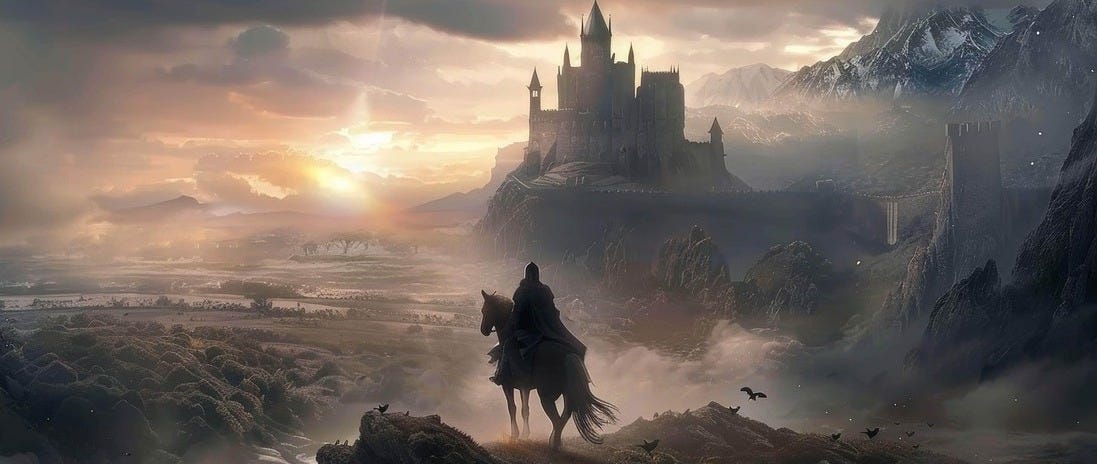
Welcome back to the show. Today, we’re going on a journey—one that spans from the halls of ancient Greek palaces to the mead-soaked feasting grounds of Norse legends, to the monster-haunted moors of early English poetry.
We’re talking about the Hero’s Journey—a timeless pattern that weaves through myth, story, and human experience. And if you’ve ever felt like you're called to something greater, like you're wrestling forces bigger than yourself—whether as a soldier, a law enforcement officer, a protector, a father, or simply a man trying to live a life of purpose—then this episode is for you.
We owe much of our understanding of the Hero’s Journey to a man named Joseph Campbell. He was a professor of literature who spent his life studying mythologies from around the world. In his groundbreaking work, The Hero with a Thousand Faces, Campbell argued that heroes across cultures share a similar path—a monomyth. The journey of a hero, he said, is really the journey of all of us.
But this isn’t just some dusty academic framework. It’s something visceral. It’s a blueprint for transformation. And if you understand it, you can use it. You can train with it like a weapon, like a compass—especially if you work in dangerous professions, if you operate in the margins, if your calling puts you face-to-face with chaos.
Today, we’ll explore this journey through the eyes of three legendary warriors: Sigurd the dragonslayer of Norse myth, Odysseus the cunning king of Ithaca, and Beowulf, the monster-fighting hero of the Geats. These aren’t just stories—they’re maps. Let’s follow them.
I. The Departure
1. The Call to Adventure
The hero’s story begins with a call—something that disrupts the ordinary world. It’s not always glamorous. Sometimes it’s a whisper. Other times it’s a scream.
Take Sigurd, for example. Orphaned young and raised by the smith Regin, Sigurd’s early life was shaped by tragedy and apprenticeship. But the true call came when Regin told him of the dragon Fafnir—guardian of a cursed treasure and slayer of Regin’s own father. That story wasn’t just a tale; it was bait, a spark, a challenge. Sigurd could have lived a simple life as a blacksmith. But the story lit something in him.
Odysseus, meanwhile, had his call forced upon him. As king of Ithaca, he was clever, comfortable, and had no desire to leave his family for war. But he was bound by an oath to join the Greeks in their siege of Troy. His call came in the form of duty—his honor and past decisions dragging him into a decade of war.
Beowulf’s call came as a messenger from afar. Across the sea, in the mead-hall of King Hrothgar, a monster named Grendel was devouring men in the night. Beowulf, young and untested, heard the call and crossed the sea—not for wealth, but for glory and duty. He sought a name worthy of song.
The call to adventure always demands something: courage, sacrifice, action. And in our modern world, the call might not look like a dragon. It might be a deployment order. A crisis. A personal breakdown. A decision that can’t be undone.
2. Refusal of the Call
Not every hero accepts the call right away. Fear, doubt, or duty to family can create hesitation.
Odysseus famously pretended to be insane to avoid going to war. He yoked a donkey and an ox together to plow a field with salt. Only when his infant son was placed in front of the plow did he drop the act and accept the call. It’s a stark reminder: the hero’s path often collides with personal cost.
Sigurd doesn’t show as much hesitation, but we know he questioned Regin’s motives. There’s wisdom in that. The path forward may be laced with betrayal or half-truths, even from mentors.
For those of us in law enforcement or military service, the refusal can come in subtle ways—ignoring the signs of burnout, avoiding necessary changes, clinging to a version of ourselves we’ve outgrown.
3. Meeting the Mentor
The mentor is the guide, the one who arms the hero for the unknown.
Sigurd had Regin, who taught him the arts of smithing, swordplay, and lore—but Regin was a dark mentor. He passed on knowledge but also had his own agenda. Still, Sigurd forged the sword Gram, learned the dragon’s weaknesses, and prepared for battle.
Odysseus had Athena, the goddess of wisdom and war. She didn’t walk beside him every day, but her influence guided him at key moments—offering disguise, counsel, and divine insight.
Beowulf’s mentorship is less obvious. His guidance comes from the traditions of his people, from the code of honor passed down through heroic lineage. He is mentored by story itself—by the legacy of warriors before him.
In your life, mentors might not wear cloaks or hold magical wands. They are your parents, instructors, NCOs, leaders, or old-timers with scars and stories. You know them by the truths they pass down—the lessons paid for in blood.
No matter how old you get, you never outgrow your need for a mentor. Remember, when you face a trial that’s outside the scope of your knowledge and abilities, you need to find a mentor, someone who has been there to give you the guidance and insights you need to face and overcome it.
4. Crossing the Threshold
Here’s where things get real. The hero steps into the unknown.
Sigurd leaves his safe forge to hunt a dragon. Odysseus boards the ships for Troy, beginning a journey that will last 20 years. Beowulf sails across a sea into a land not his own, to face a monster born of hell.
This boarding the bus that takes you to basic training. It’s heading off on your first deployment. This is going operational. This is stepping into a conflict zone. Or it might be something internal—facing trauma, addiction, or a total upheaval of life.
Once the threshold is crossed, there’s no going back. Life as you’ve known it is forever changed.
II. The Initiation
5. Trials, Allies, and Enemies
This stage is the heart of the journey — the crucible where the hero is tested, refined, and shaped. For those of you in uniform, these are the deployments, the shifts that test your patience and grit, the moral challenges that force you to choose between right and easy. It's not just physical hardship, but ethical and psychological trials too.
Odysseus’ trials are legendary — the Sirens, the Lotus-Eaters, Scylla and Charybdis, and betrayal from his own crew. Each trial reveals more of who he is — his strengths, his weaknesses, his fears. Likewise, Sigurd must not only slay Fáfnir, but also grapple with betrayal. Regin, his mentor, plans to kill him and steal the treasure. Sigurd anticipates this and slays him first. It's a grim moment, but one that reflects a common reality for warriors — sometimes, the enemy is closer than you think.
And then there’s Beowulf, who enters the hall of Heorot to battle the monster Grendel, and later Grendel’s mother, and finally a dragon in his old age. Each fight is harder than the last, and each reveals a new layer of Beowulf’s character: his bravery, his pride, his aging body, and ultimately, his willingness to die protecting his people. These stories show that real trials don’t just test your body — they strip you down to the core and ask, “Who are you, really?”
6. Approaching the Inmost Cave
Now we come to one of the most quietly profound stages of the Hero’s Journey — Approaching the Inmost Cave. It’s not just a physical place. It’s the threshold before the deepest confrontation — the edge of the abyss. The moment right before the hero faces what they fear most.
This is often misunderstood. It’s not yet the ordeal. It’s the build-up — the gathering of courage, the reckoning, the preparation. It's the moment when the hero looks down into the black maw of the unknown and feels the full weight of what’s coming.
Let’s turn to Sigurd first.
After forging the mighty sword Gram and learning of the cursed treasure guarded by the dragon Fafnir, Sigurd prepares. He doesn't rush in. He listens to Regin’s stories, learns about Fafnir’s habits, and digs a trench to strike from below. He lies in wait — alone — in the dirt, heart pounding, knowing that if he fails, there’s no second chance. The cave, in this case, is literal — the lair of a monster shaped by greed, transformed into something unnatural. But symbolically, it's Sigurd preparing to face a force far greater than himself… and all that it implies.
For Odysseus, this moment comes before he descends into the Underworld. He’s already endured storms and loss. But now, Circe tells him the truth: he must seek the wisdom of the dead. Not just battle monsters — consult the ancestors. This is ancient. It’s raw. Before he enters Hades, he must prepare sacrifices, confront his fear of death, and face the guilt of all he’s lost. It's not action yet — it's preparation for a confrontation with memory, legacy, and fate.
And then there's Beowulf, later in life. An old king, no longer the brash youth who tore Grendel limb from limb. The dragon has awakened — a force of ancient vengeance. Before entering the lair, he gives a speech to his men. He remembers his past victories. He understands that this may be his final battle. There’s an aching sobriety in his tone. He doesn’t rush. He knows what’s coming. He approaches the cave as a man who has walked the path before, but never with stakes this high.
Modern Parallels:
In our world, the Inmost Cave might be a courtroom, a funeral, a hospital room, or the dark hour before a major raid or mission. It might be the moment before you confront a broken relationship… or yourself in the mirror.
It’s not the fight. It’s the silence before the fight. It’s the place where you make you last preps before final fight.
It's the hour you pray, check your kit, write the letter just in case you don’t make it. It’s the internal review where your demons speak a little louder and your faith is tested.
Approaching the Inmost Cave is where the hero has to pause — not out of hesitation, but because something sacred is at hand. It’s not just a physical danger; it’s the emotional, spiritual, and moral weight of what lies ahead.
It demands readiness. Ritual. Reflection. Sometimes solitude. Always courage.
So ask yourself — what cave are you standing before?
And are you ready to enter?
7. The Ordeal and Reward

The Ordeal is the deep descent — the moment of symbolic death and rebirth. It’s where the hero goes through something so harrowing that he’s forever changed. For warriors and protectors today, this might be the aftermath of a firefight, the psychological toll of leadership in crisis, or surviving a betrayal within your ranks. You don’t walk away the same — and that’s the point.
Sigurd, after slaying Fáfnir and Regin, gains not only the dragon’s hoard, but also the ability to understand the language of birds. It’s a metaphor for wisdom — he’s stepped into a new level of awareness. But it comes at a cost. He’s now a marked man, drawn into tragic betrayals and doomed love.
Odysseus’ ordeal is long and complex. Perhaps the most emotional moment comes when he returns home and has to reclaim his household from treacherous suitors. It’s not a glorious battlefield — it’s domestic, but just as deadly. He must hide his identity, gauge loyalty, and strike with precision. His reward isn’t treasure — it’s the restoration of his kingdom and reunion with his wife and son. The real reward is peace, earned through fire.
8. The Return — Bringing the Elixir Home
Now here’s the thing most modern folks miss about the hero’s journey: it’s not about the hero. Not really. The journey doesn't end when the monster falls or the crown is won. The final leg is the return. The hero has to bring something back — some gift, some wisdom, some hard-won truth that can benefit others.
But returning home? That’s often the hardest part.
Odysseus takes ten years to get back to Ithaca. And when he does, it’s not a hero’s welcome. His house is overrun by suitors who’ve been trying to take his wife and throne. His return is filled with tension, strategy, and hidden identity. But this is where we see the full arc — Odysseus isn’t just a soldier anymore. He’s a king who has endured trial after trial. He’s sharper, more restrained, wiser. His kingdom is restored — not by brute force alone, but by clarity of mind and control over emotion.
Sigurd’s return, if you can call it that, is more tragic. After gaining wisdom and slaying monsters, he enters a world of politics and betrayal. He helps win a woman’s hand for another man. He’s drugged to forget the love of his life. Eventually, he’s betrayed and murdered by those he thought were allies. It’s not a happy ending — but it’s profoundly mythic. It tells us that great power, great wisdom, doesn’t guarantee a smooth ride. Sometimes, bringing back the “elixir” puts you in conflict with the world as it is.
Beowulf, on the other hand, returns to his homeland and becomes king. He rules in peace for fifty years. But even in old age, the call comes again — a dragon threatens his people. So he rises one final time to face it. He wins — but it kills him. His return ends with sacrifice, but also with honor. He dies as a protector, fulfilling his duty to the very end.
In these myths, we see the full circle. A hero leaves, is transformed, and returns — not to bask in glory, but to serve.
9. Master of Two Worlds — Integration
Here’s where the real transformation settles in. The hero becomes someone who can walk in both worlds — the wild world of chaos and danger, and the structured world of society, family, and legacy.
For many warriors, veterans, or anyone who has walked through their own ordeal, this is the hardest part. You return from war, from trauma, from adversity — but can you live with what you’ve learned? Can you integrate it? Can you bring it home without becoming a stranger?
Odysseus struggles with this. The man who could outwit gods now has to learn how to live with his wife again, how to be a father, how to re-enter “civilian” life. The myth doesn’t pretend it’s easy — and that’s the point.
The lesson here is about integration. You’re not supposed to forget what you went through. But you are supposed to grow from it — to become someone who carries the fire without burning down the world around you.
Why It Matters Today — Practical Takeaways
So why are we talking about all this?
Because the Hero’s Journey isn’t just an ancient storytelling device. It’s a blueprint for how we grow. And in an age of distraction, cynicism, and shallow living, it offers something profoundly human and deeply needed — a pattern for transformation.
For those in military and law enforcement, this story is yours. The call to adventure? That’s your enlistment, your badge, your first oath. The trials? That’s your training, your fieldwork, your deployments. The ordeal? The moments that left marks on your body or mind. And the return? That’s what you do with it all — how you lead, how you mentor, how you serve your community after the chaos.
But it’s not just for warriors. Entrepreneurs, fathers, coaches, citizens — we all have journeys. We all face dragons. We all return home changed. What matters is whether we learn to wield that change well.
So here’s the call: Don’t just consume stories. Live one. Use the Hero’s Journey to understand where you are right now — and where you need to go next. What stage are you in? Are you still waiting for the call? In the thick of the trials? Or trying to find a way back home?
Wherever you are — know this: you’re not the first. The road is old. And the stories — the ones of Sigurd, Odysseus, Beowulf, and many others — are still with us to light the way.
Resources:
The Hero With A Thousand Faces, Joseph Campbell
Are you digging this transmission? Let me know in the comments below and keep the conversation going.


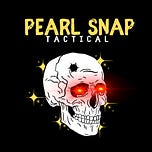

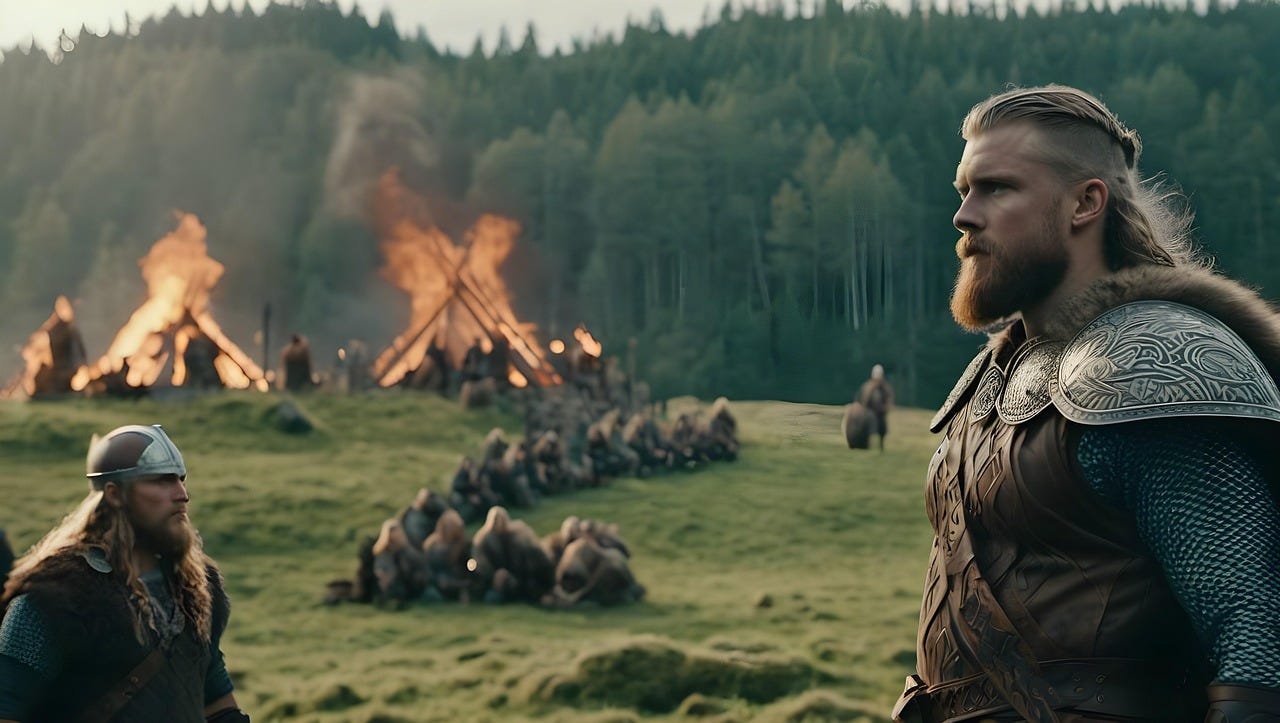
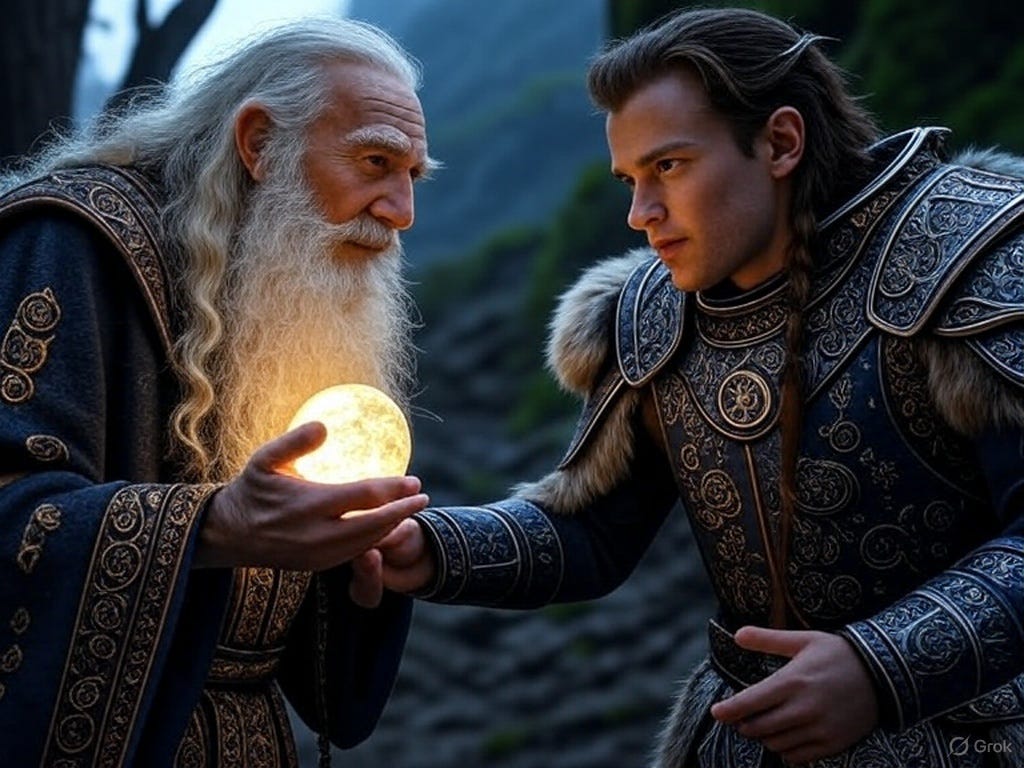
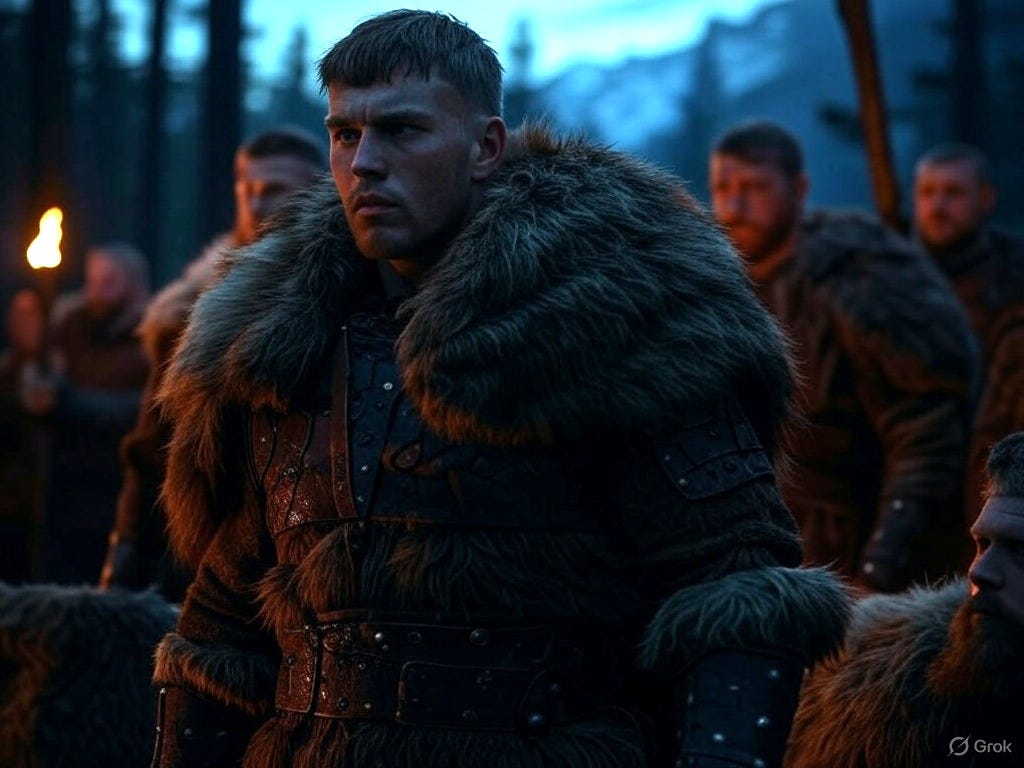







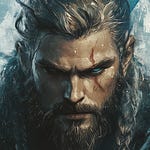


Share this post